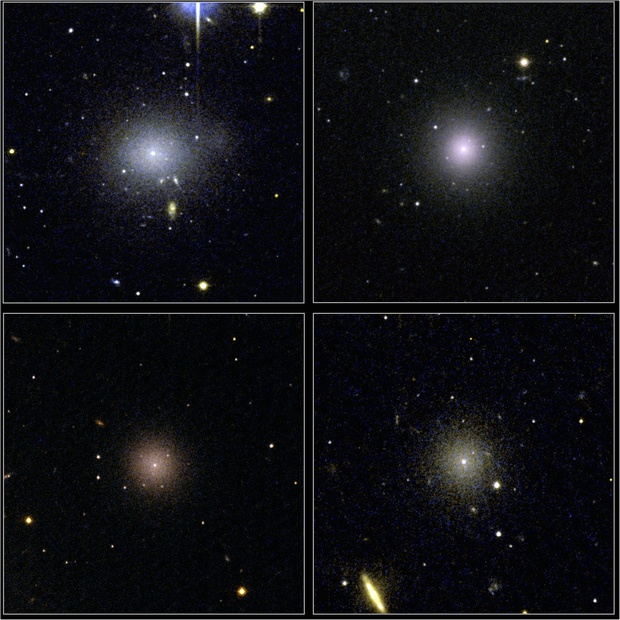The explanation? The undisturbed galaxies are enshrouded by a "cushion" of dark matter that protects them.
Dark matter is a theoretical invisible form of matter that accounts for most of the Universe's mass. Astronomers have deduced the existence of dark matter by gravitational influences on normal matter, such as stars, gas and dust.
First proposed about 80 years ago by Swiss astronomer Fritz Zwicky, dark matter is thought to be the 'glue' that holds galaxies together. Astronomers suggest that dark matter provides a vital scaffolding for the Universe, forming a framework for the formation of galaxies through gravitational attraction.
Dwarf galaxies may have an even higher amount of dark matter than spiral galaxies. "With these results, we cannot say whether the dark matter content of the dwarfs is higher than in the Milky Way Galaxy," says astronomer Christopher Conselice of the University of Nottingham, and leader of the team that made the Hubble observations."Although, the fact that spiral galaxies are destroyed in clusters, while the dwarfs are not, suggests that this is indeed the case."
A huge cluster of galaxies lies in the northern constellation of Perseus. At a distance of 300 million light-years from Earth, it is one of the nearest galaxy clusters. The entire cluster contains thousands of galaxies and is considered to be one of the most massive objects in the Universe. Astronomers believe the cluster's smallest galaxies have survived intact for billions of years. Hubble has photographed four of these dwarf galaxies, which astronomers believe are embedded in haloes of an invisible form of matter called dark matter. Credit: NASA, ESA, G. Bacon (STScI) and M. Kornmesser (ESA/Hubble)
Observations by Hubble's Advanced Camera for Surveys spotted 29 dwarf elliptical galaxies in the Perseus Cluster, located 250 million light-years away and one of the closest galaxy clusters to Earth. Of these galaxies, 17 are new discoveries.
Because dark matter cannot be seen, astronomers must detect its presence through indirect evidence. The most common method is by measuring the velocities of individual stars or groups of stars as they move randomly in the galaxy or as they rotate around the galaxy. The Perseus Cluster is too far away for telescopes to resolve individual stars and measure their motions. So Conselice and his team derived a new technique for uncovering dark matter in these dwarf galaxies by determining the minimum additional mass contribution from dark matter that the dwarfs must have to protect them from being disrupted by the strong, tidal pull of gravity from larger galaxies.

J031931.7+4131, J031910.4+4129, J031900.4+4129 and J031905.2+4134. These four dwarf galaxies are part of a census of small galaxies in the eart of the nearby Perseus galaxy cluster. The galaxies appear smooth and symmetrical, suggesting that they have not been tidally disrupted by the pull of gravity in the dense cluster environment. Larger galaxies around them, however, are being ripped apart by the gravitational tug of other galaxies. The Hubble Space Telescope images are evidence that the undisturbed galaxies are enshrouded by a "cushion" of dark matter, which protects them. Observations by Hubble's Advanced Camera for Surveys spotted 29 dwarf elliptical galaxies in the Perseus Cluster, located 250 million light-years away and one of the closest galaxy clusters to Earth. Of those galaxies, 17 are new discoveries. The images were taken in 2005. Credit: NASA, ESA and C. Conselice (University of Nottingham, U.K.)
Studying these small galaxies in detail was possible only because of the sharpness of Hubble's Advanced Camera for Surveys. Conselice and his team first spied the galaxies with the WIYN Telescope at Kitt Peak National Observatory. These observations, Conselice says, only hinted that many of the galaxies were smooth and therefore dark matter dominated. "Those ground-based observations could not resolve the galaxies, so we needed Hubble imaging to nail it," he says.
The Hubble results appeared in the 1 March issue of Monthly Notices of the Royal Astronomical Society.





Comments